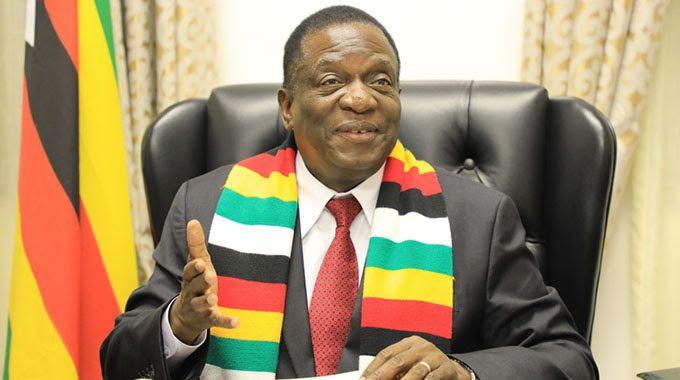Power challenges set to ease. . . Hwange Unit 7 soon to add 300MW to grid

Blessings Chidakwa Herald Reporter
POWER challenges will be dramatically ameliorated as Government is working on the “best and most” reliable power supply, President Mnangagwa said yesterday.
With the imminent commissioning of Unit 7 at Hwange Thermal Power Station about to add 300MW to the national grid, Zimbabwe’s electricity challenges will soon be overcome.
President Mnangagwa said the upgrading and expansion of Hwange Thermal Power Station is one of the clear testimonies that the future of the country’s power situation is bright.
Unit 7 of Hwange Thermal Power Station has been completed, and the generation systems tested and accepted. But before connection to the national grid, engineers need to finalise works on the protection system.
This was deferred when a resurgence of Covid-19 in China delayed the departure of technicians from that country until the middle of last month, but the team is now in Zimbabwe and working on the unit.
The unit will add 300MW to the national grid while Unit 8, with the same power generation capacity, is set to come online later this year.
Government contracted Sino-Hydro to expand Hwange Thermal Power Station in a deal worth US$1,2 billion.
Posting on his Twitter handle yesterday, President Mnangagwa said his administration was working flat out to deal with the issue of power challenges.
“Power has long been a challenge in Zimbabwe. We are working to provide our country with the best and most reliable power. The work on the Hwange Thermal Power Station, which I visited last year, shows how far we have come and what is possible in the future. #Vision 2030,” he said.
Energy and Power Development Minister Zhemu Soda a few days ago said Unit 7 was expected to be fully operational at the end of last month. However, there were delays owing to challenges in mobilising technicians from the Chinese company ABB to conduct the testing on the protection system following the resurgence of Covid-19 in China.
The actual unit of coal feed, boiler, turbines and generator is fully functional.
“The testing of the power plant was done and passed,” said Minister Soda.

Energy and Power Development Minister Zhemu Soda
“We are only left with the testing of the protection system that allows for the evacuation of power to the transmission system and a team from China only came into the country during mid-December when we initially expected them in November.
“There was also a delay in them understanding all the systems; we are now expecting them to complete the test in three weeks and to have the plant run by the end of this month.”
There are unlikely to be any serious delays to the planned commissioning of Unit 8 at the end of March since Unit 7 has shown the way.
“We don’t expect to take much longer to commission Unit 8 because we have learnt many lessons from the current unit,” said Minister Soda.
After the commissioning of the Hwange 7 and 8, Zesa intends to start major rehabilitation of the existing six units commissioned in the 1980s to restore their capacity to 920MW. At present they operate on average at about half that capacity.
Already, the Government has secured US$310 million from the Export-Import Bank of India for the rehabilitation and rebuilding, which will be done in phases.
With the country and the region battling power shortages, the Government has since negotiated for additional imports from EDM of Mozambique for 100MW and 200MW from Eskom of South Africa through the Southern Africa Power Pool.
Zesa also ramped up production at Hwange thermal plant after bringing online two more units. The plant is currently producing an average of 440MW.
There was also an improvement of power supplies from the mini-hydro plants due to improved rains received so far.
Decreased water levels at Kariba Dam worsened power challenges in the country as both Zesa and its Zambian counterpart have largely used up water stored in the last flood season, and are now relying on the daily inflows into the lake at low season flow rates. Since most of the stored water in Lake Kariba comes from Angola, it takes some time for rainfall in that country to translate into rising lake levels.
Kariba is the country’s largest power plant, with a capacity of producing 1 050MW and has been the most reliable energy source.
Hwange thermal plant, the country’s second-largest plant, has become unreliable because much of the equipment is now well past its design life, hence the rehabilitation programme to replace what must be replaced and recondition what still has life left in it.











Comments